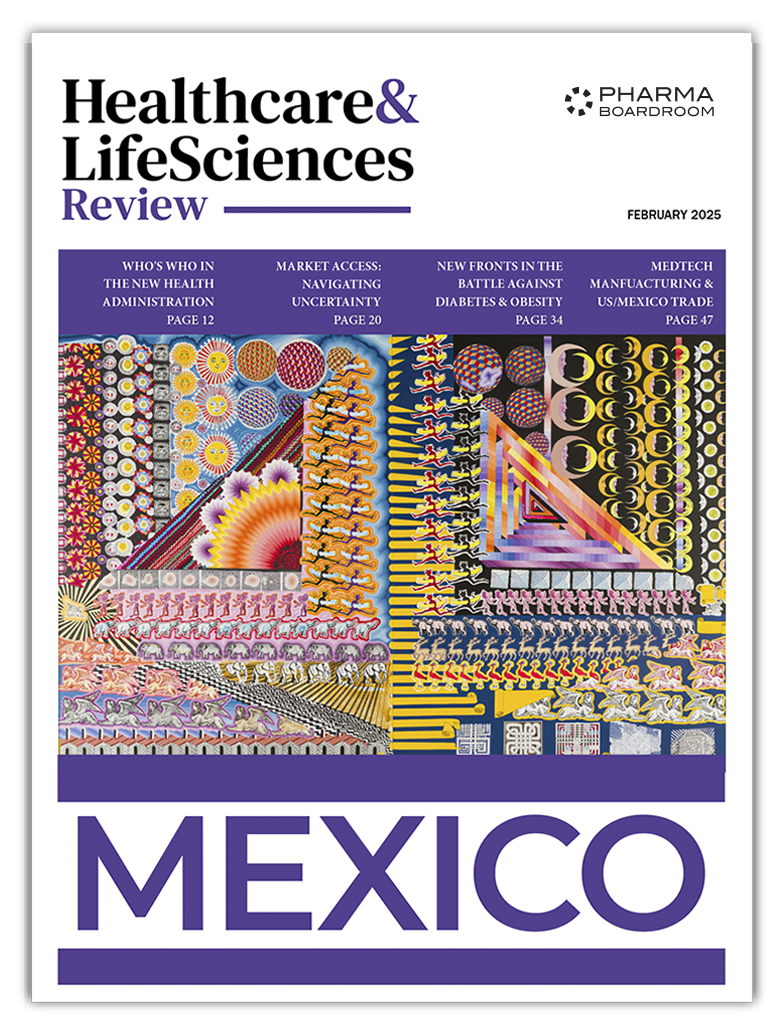Some 16 percent of Mexico’s population is battling diabetes—a number that represents one in five of the nation’s populace without including the vast numbers of undiagnosed Mexicans living with the disease. The new Mexican government has committed to reducing the burden of diabetes by stepping up primary care and preventive medicine and by raising awareness about healthy lifestyles.
Prevention is our most powerful tool to combat this disease. Strengthening primary care models must be our priority
David Kershenobich, secretary of health
Focus on Prevention and Primary Care
“Currently, in Mexico, 16 percent of the population lives with diabetes. Additionally, we estimate that 1.7 million adults over 20 years old have prediabetes, while 4.5 million live with diabetes without knowing it,” Secretary of Health David Kershenobich lamented at the sixth edition of French Healthcare Day, a binational meeting where speakers addressed topics such as the diagnosis and prognosis of patients with diabetes, available therapeutic options, and possibilities for collaboration between France and Mexico.
For the secretary of health chosen by president Claudia Sheinbaum in July, “these figures not only represent a challenge but also an opportunity to strengthen our prevention and treatment strategies, avoid complications, and improve the quality of life for millions of people.”
Along with an ongoing pursuit of universal healthcare coverage, the new government has made prevention and primary care one of the foundations of its healthcare reform ambitions. As part of this goal, Sheinbaum has vowed to bring health personnel to the homes of the elderly with the “House by house health” programme. And, to strengthen primary care, the “Alma-Ata Command” was recently created within the IMSS Bienestar public health system.
Oriented towards prevention, timely care and community outreach, the command will begin operating 211 health units in Mexico City that will later be extended into the country’s 22 federal states. “The IMSS Bienestar health centres are opportunities for the health sector, primary care is essential, and timely detection of illnesses, prevention and health promotion are the key to success,” Kershenobich said at the inauguration.
Kershenobich echoed the need for prevention at the recent France-Mexico meeting. “Prevention is our most powerful tool to combat this disease. Strengthening primary care models must be our priority,” he asserted. “President Claudia Sheinbaum has tasked us with making the 2024-2030 Health Plan a cornerstone of these efforts.”
Kershenobich also pointed out that it has been proven that countries that focus on primary care achieve better results compared to those whose services are concentrated in the later stages in hospitals. “In Mexico,” he stressed, “we want to stop people from getting sick.”
Promoting Healthy Habits
Kershenobich also emphasised the need for collaboration among government bodies, communities and industry in order to promote “healthier lives for all” and spoke of the France-Mexico Nutrition Summit to be held in Paris next March, which will be centred on healthy eating habits and bring together institutions, universities, and the agri-food sector to “share experiences and work together on solutions that positively impact our communities.”
The health secretary also mentioned the importance of building awareness and encouraging physical activity in homes and workplaces, as well as optimal and balanced nutrition. Mexico’s diabetes organizations also foster education in these areas.
“We firmly believe that education is the most valuable tool to improve quality of life,” Gabriela Allard, president of the Mexican Diabetes Association (AMD), told PharmaBoardroom. “Our principal tool is diabetes education. When you live with a long-term condition like diabetes, it’s essential to understand what is happening in your body and how various factors such as diet, exercise, and lifestyle choices affect your health,” Gisela Ayala, executive director of the Mexican Diabetes Federation, agreed.
Ambitious Goals
According to Kershenobich, the new government is working on developing ways to standardize diagnoses and treatments, “both pharmacological and non-pharmacological, across the public and private sectors.”
For Gabriela Allard this lack of standardization is particularly evident when it comes to self-monitoring for diabetes patients. “In our healthcare system, there is no generalized access to self-monitoring,” she complained. “Most of the population is not aware of these devices or financially able to access them, making self-care and proper glucose control difficult. In the country’s public health system, there is a lack of access to these monitoring devices and test strips that could help patients be more responsible for their condition.”
The new government has set ambitious goals based on the combined effects of prevention and education, aiming to reduce the prevalence of hypertension, diabetes, and obesity by 5 to 10 percent during its 6-year term. “To achieve this, we will begin by monitoring 500,000 individuals with three or more metabolic risk factors, tracking their progress, and generating insights to strengthen our public policies,” said Kershenobich.
Image Source: French Embassy in Mexico



